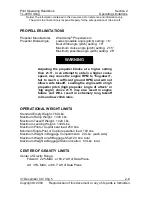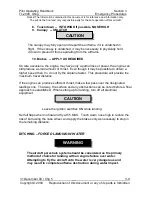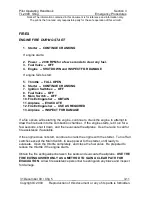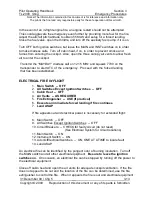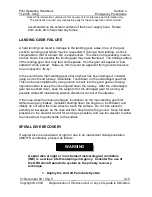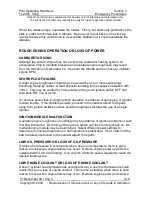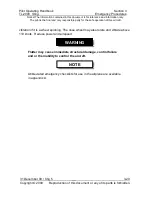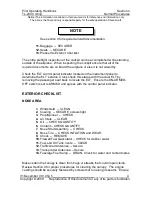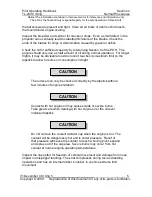
Pilot Operating Handbook
Section 3
TL-2000
Sting
Emergency Procedures
Notice! The information contained in this document is for reference and information only.
The pilot is the final and only responsible party for the safe operation of this aircraft.
31 December 09 / Chg 5
__
3-11
Copyright © 2009 Reproduction of this document or any of its parts is forbidden.
FIRES
ENGINE FIRE
DURING START
1. Starter -- CONTINUE CRANKING
If engine starts:
2. Power -- 2000 RPM for a few seconds to clear any fuel.
3. Fuel Valve -- OFF
4. Engine -- SHUTDOWN and INSPECT FOR DAMAGE
If engine fails to start:
5. Throttle -- FULL OPEN
6. Starter -- CONTINUE CRANKING
7. Ignition Switches -- OFF
8. Fuel Valve -- OFF
9. Main Switch -- OFF
10. Fire Extinguisher -- OBTAIN
11. Airplane -- EVACUATE
12. Fire Extinguisher -- USE AS REQUIRED
13. Airplane -- INSPECT FOR DAMAGE
If a fire occurs while starting the engine, continue to crank the engine to attempt to
draw the fire back into the combustion chamber. If the engine starts, let it run for a
few seconds, shut it down, and then evacuate the airplane. Use the radio to call for
fire assistance if available.
If the engine does not start, continue to crank the engine with the starter. Turn off all
switches except the Main Switch, to keep power to the starter, until ready to
evacuate. Open the throttle completely, and close the fuel valve. Be prepared to
reduce the throttle if the engine starts.
Obtain the fire extinguisher between the seats and evacuate the airplane.
USE THE
FIRE EXTINGUISHER ONLY AS A METHOD TO GAIN A CLEAR PATH FOR
EVACUATION
. Allow fire assistance personnel to extinguish any blaze and inspect
for damage.


